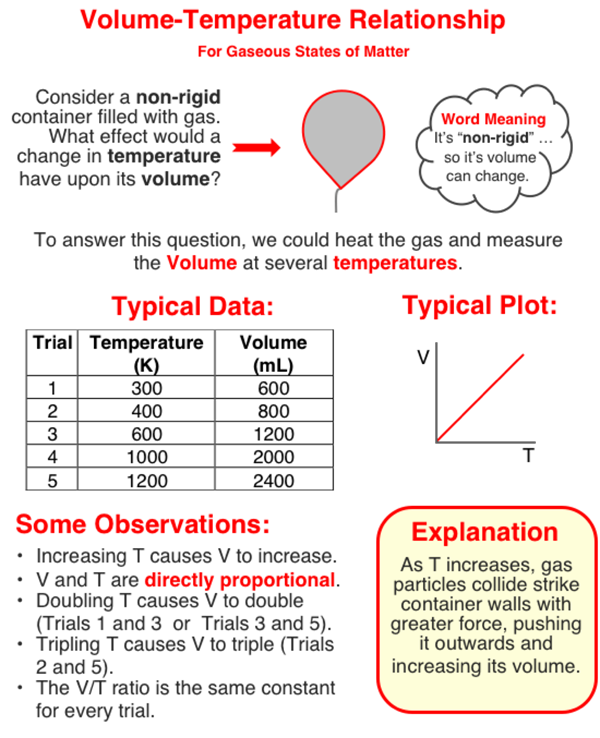In this question, you need to analyze a set of data to determine the volume when the temperature is 1500 K. One way to do that is to use proportional reasoning. We'll explain that in a moment. But first, take some time to study (and/or scan) the graphic in order to gain familiarity with the volume-temperature relationship. Then continue to the text that continues below the graphic.

Reasoning Proportionally with Volume and Temperature
The temperature of 1500 K is three times the temperature of 500 K. And since a tripling of the Kelvin temperature leads to a tripling of the volume, we should be able to use this three times factor to find the answer. Trial 2 of the table has a temperature of 500 K. So the volume at 1500 K will be three times the volume of Trial 2. So your answer can quickly be found by tripling the volume at 500 K.